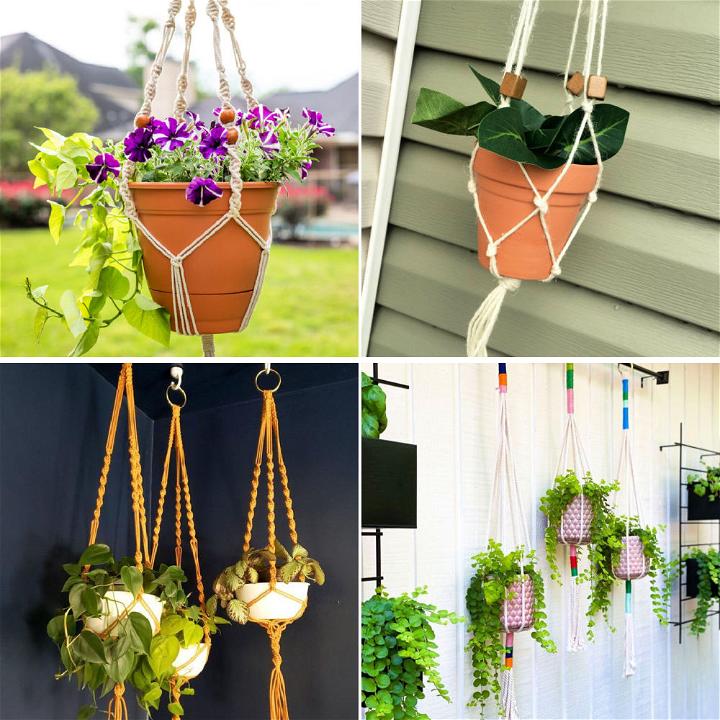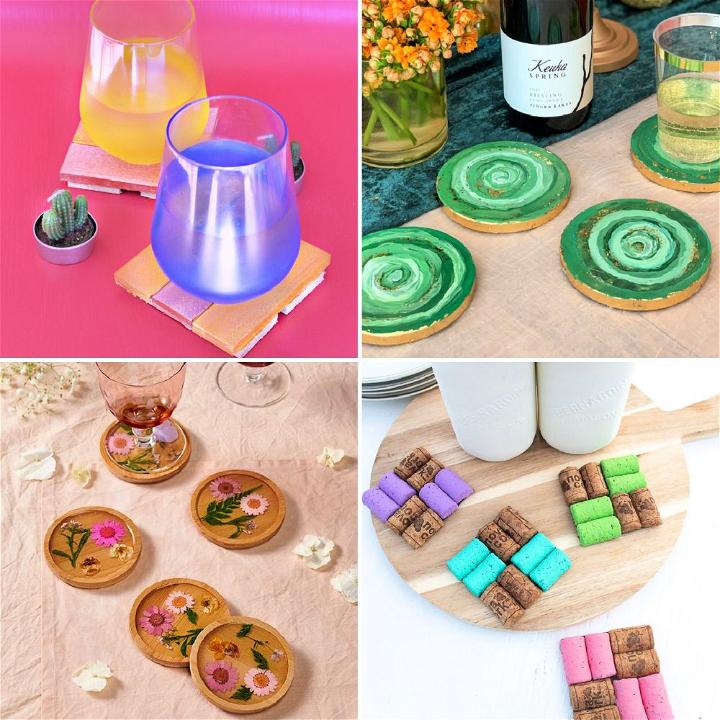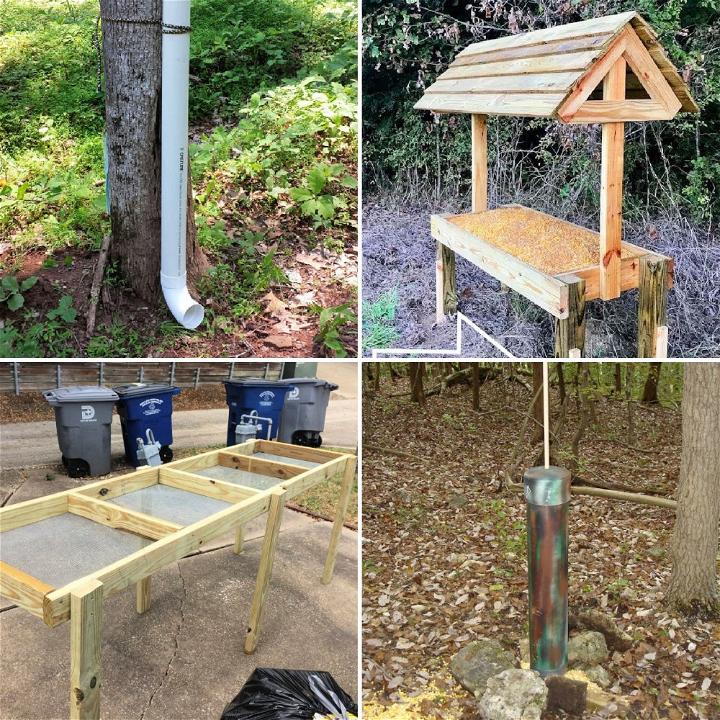Making plant labels is not just a way to identify your plants; it's also an opportunity to practice sustainability. In this section, we'll explore various materials that are both eco-friendly and perfect for your DIY plant labels & markers.
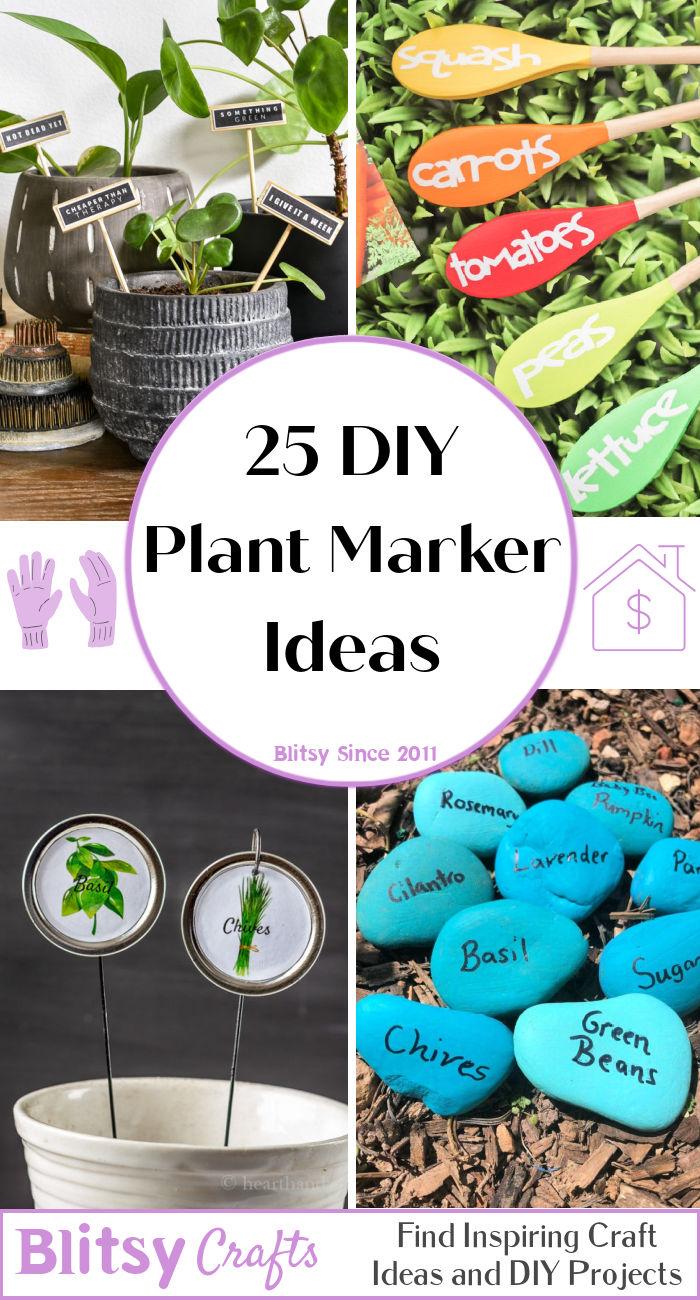
Why Choose Sustainable Materials?
Choosing sustainable materials means opting for resources that have a minimal environmental impact. They are either biodegradable, recycled, or sourced from renewable resources. By using these materials, you're contributing to a healthier planet and reducing waste.
Types of Sustainable Materials
Biodegradable Options:
- Bamboo: This fast-growing plant is a renewable resource that can be fashioned into durable labels.
- Cork: Harvested from the bark of cork oak trees, cork is a sustainable choice that doesn't harm the tree.
Recycled Materials:
- Wine Corks: Reuse wine corks by attaching them to skewers or dowels to make natural-looking markers.
- Popsicle Sticks: After enjoying your treat, repurpose the sticks as plant labels.
Natural Finds:
- Stones or Pebbles: Use a waterproof marker to write on smooth stones from your garden as a permanent labeling solution.
How to Make Your Labels Last
To ensure your plant labels withstand the elements, consider these tips:
- Protective Coating: Apply a non-toxic sealant to wood-based labels to prevent decay.
- Waterproof Writing: Use waterproof markers or paint to ensure the names on your labels remain legible through watering and rain.
Choosing eco-friendly materials for DIY plant labels & markers is a small yet impactful way to help the environment and show your commitment to sustainability.
How to Make Plant Labels & Markers
Learn how to make plant labels & markers with this easy guide. Personalize your garden and keep track of your plants with homemade markers.
Why You Need This Guide
Store-bought or online plant labels often fade quickly in the sun. UV-resistant markers also don't last. This guide offers a lasting, affordable solution for legible labels.
What Materials You'll Need and Why
- Paint Paddles: An unconventional choice, paint paddles (or paint stirrers) serve as the perfect alternative to traditional plant labels. They are not only resistant to weathering and sun fading but also offer ample space to write down plant names clearly. Their durability ensures they last for years, unlike their plastic counterparts which might not survive a single season. Plus, their cost-effectiveness is unmatched.
- Permanent Marker: To write on your labels, you'll need a permanent marker that can endure the elements. Although some markers claim UV resistance, a regular permanent marker on the wood surface of a paint paddle seems to hold up much better over time.
Step by Step Instructions
Step 1: Gather Paint Paddles
You can find paint paddles at any hardware store, often for free or at a minimal cost. Ensure you have enough for all the plants you wish to label.
Step 2: Write Plant Names
Using a permanent marker, clearly write the name of each plant on a paint paddle. Feel free to include other relevant information, such as planting dates or specific care instructions.
Step 3: Insert into Soil
Place your newly made labels into the soil near the respective plants. Ensure they are pushed deep enough to stand firm but are fully visible for easy identification.
Expanding the Scope: Tips and Troubleshooting
- Variations: If you're feeling creative, you can paint or decorate the paddles to add a personal touch to your garden. However, ensure any decorations are weather-resistant.
- Common Pitfalls: Avoid using water-based markers or pens as they will quickly fade or wash away. Similarly, ensure the labels are securely placed to avoid displacement by pets, wild animals, or strong winds.
- Why This Works: Wood's natural resistance to UV radiation makes it a superior material for outdoor labeling purposes. By following these steps, you not only solve the problem of fading labels but also contribute to a more sustainable gardening practice by repurposing simple materials.
Video Tutorial
Want a visual demonstration? Watch a step-by-step video tutorial on YouTube for making durable DIY plant labels. It provides a clear and easy-to-understand visual walkthrough of the techniques, making it a great companion to this written guide.
Make your own plant labels with paint paddles for durable, cost-effective, creative gardening. Enjoy clear plant identification year-round without fading labels or costly alternatives.
FAQs About Sustainable DIY Plant Labels
Making sustainable DIY plant labels is a fantastic way to add a personal touch to your garden while being environmentally conscious. Here are some common questions and helpful answers to guide you in making your own eco-friendly plant markers.
What are the best materials for making biodegradable plant labels?
The best materials for biodegradable plant labels are those that naturally decompose without harming the environment. Bamboo, hardwood, and cork are excellent choices. They are durable and can be composted after use.
Can I use recycled materials for plant labels?
Absolutely! Recycled materials like old wine corks, popsicle sticks, and even repurposed plastic containers can be turned into plant labels. Just ensure they are clean and free from harmful substances before using them in your garden.
How can I make my DIY plant labels weather-resistant?
To make your DIY plant labels weather-resistant, use waterproof markers or paints for writing. You can also apply a non-toxic sealant to wood labels to protect them from moisture and decay.
Are there any creative ways to label plants without harming the environment?
Yes, there are many creative ways! You can use stones and write on them with waterproof markers, or even engrave names on fallen branches or leaves. These methods are not only eco-friendly but also add a natural aesthetic to your garden.
How can I ensure the writing on my plant labels lasts?
For the writing to last, use permanent, waterproof markers or paint. You can also engrave or burn the names into wood or bamboo for a more permanent solution. Regular maintenance, like reapplying sealant or touching up the writing, can also help.
25 Cool DIY Plant Labels & Markers
Discover 25 creative DIY plant labels & markers to help you organize and identify your garden. From upcycled materials to sleek designs, get inspired now!
1. Plant Markers from Old Mason Jar Lids
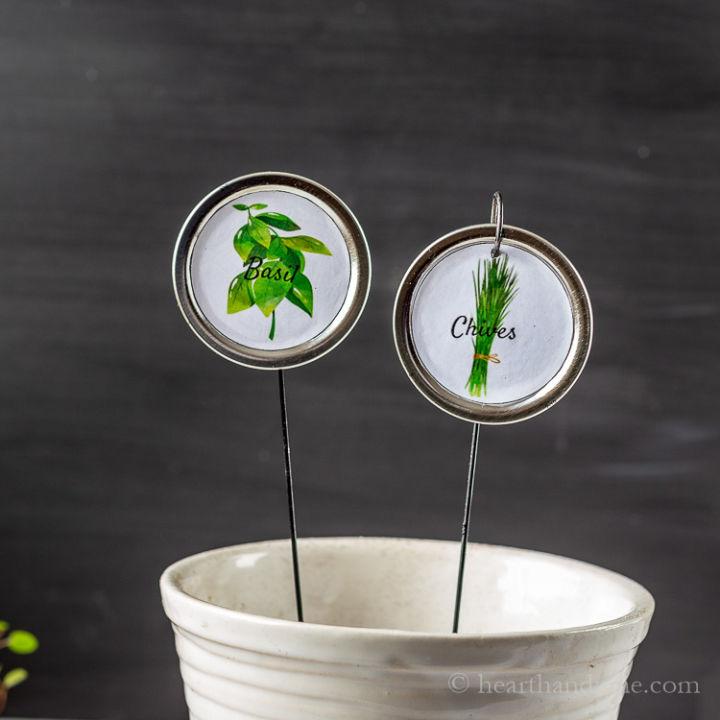
Recycle your mason jar lids into charming plant markers. A sustainable option that adds a vintage touch to your garden. These markers are durable, weather-resistant, and easy to write on, perfect for labeling your plants in style.
2. Colorful DIY Spoon Plant Markers
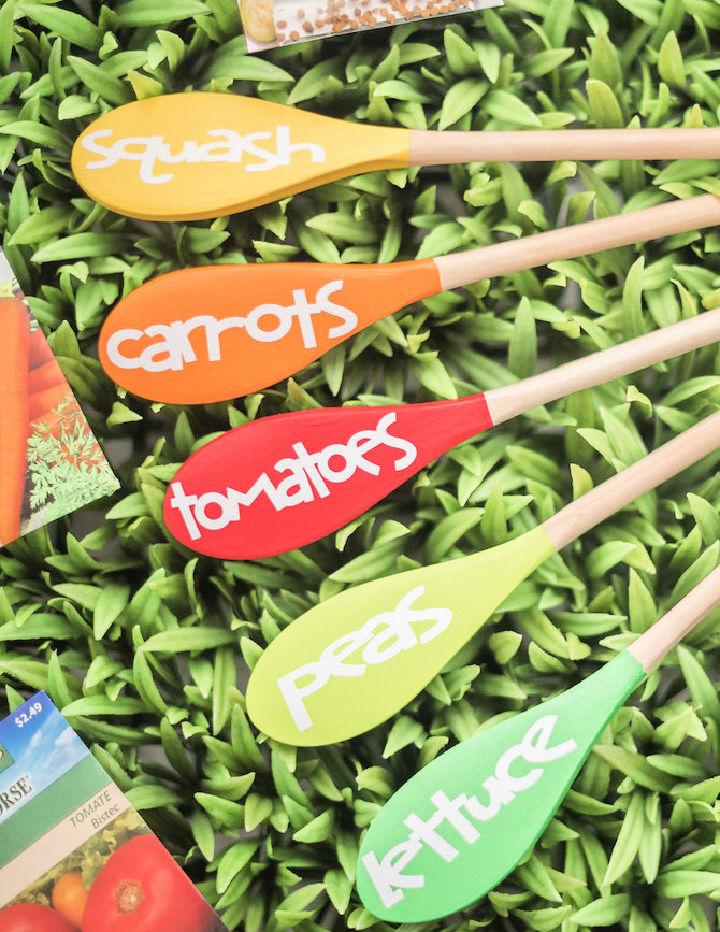
Transform old spoons into vibrant garden markers. This creative project provides a splash of color and an artistic flair to your garden beds. Simply paint and inscribe each one for a unique, personal touch that helps you identify your plantings.
3. Cute Terra Cotta Plant Labels
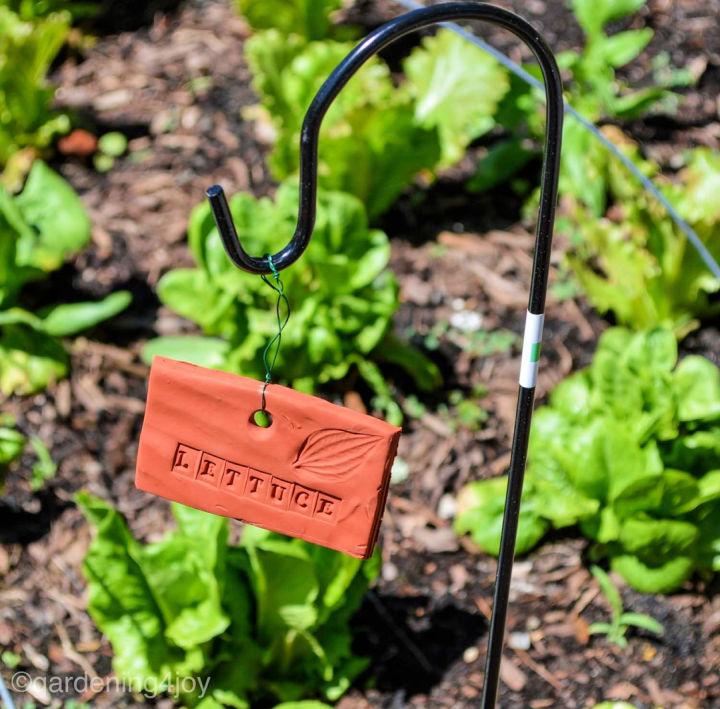
For an earthy, natural look, tiny terra cotta pots make adorable plant labels. Simply inscribe the plant's name on each pot and place it in front of its corresponding plant. They blend seamlessly into the garden, enhancing its aesthetic while being practical.
4. DIY Wine Cork Garden Markers

Upcycle your wine corks into eco-friendly, stylish garden markers. By attaching the cork to a skewer and labeling it, you not only save on resources but also add a touch of rustic charm to your garden. Plus, they're biodegradable!
5. Homemade Painted Rocks Plant Markers

Gather some stones and turn them into personalized plant markers. Painted rocks can bear plant names and designs, adding a whimsical element to your garden. It's a fun, creative, and cost-effective way to label plants and veggies.
6. DIY Brick Herb Markers
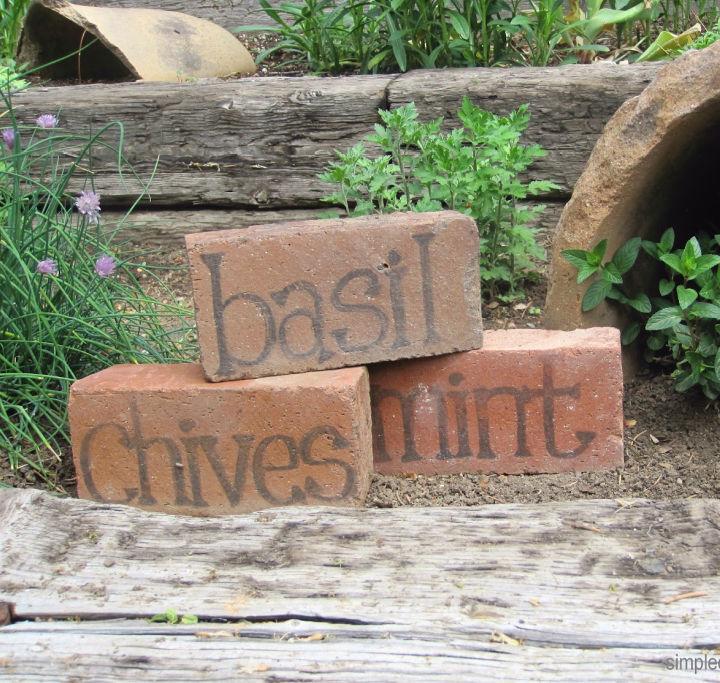
Repurpose bricks as robust herb markers. With a simple coat of paint and lettering, you get a sturdy, weather-resistant label that brings an industrial chic vibe to your herb garden. It's a solid, almost indestructible option for outdoor spaces.
7. Wooden Vegetable Plant Markers
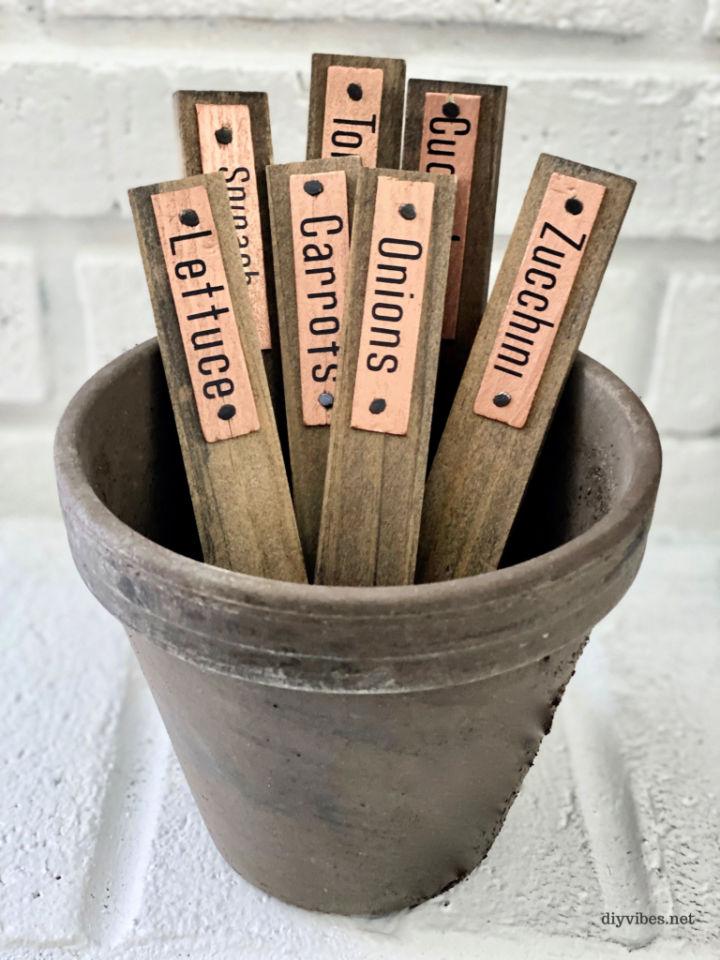
Make wooden stakes into rustic plant markers for your vegetable garden. They're easy to make, environmentally friendly, and can be customized with names and illustrations. These markers blend naturally with the garden environment while providing clear plant identification.
8. Scrabble Tile Herb Plant Markers
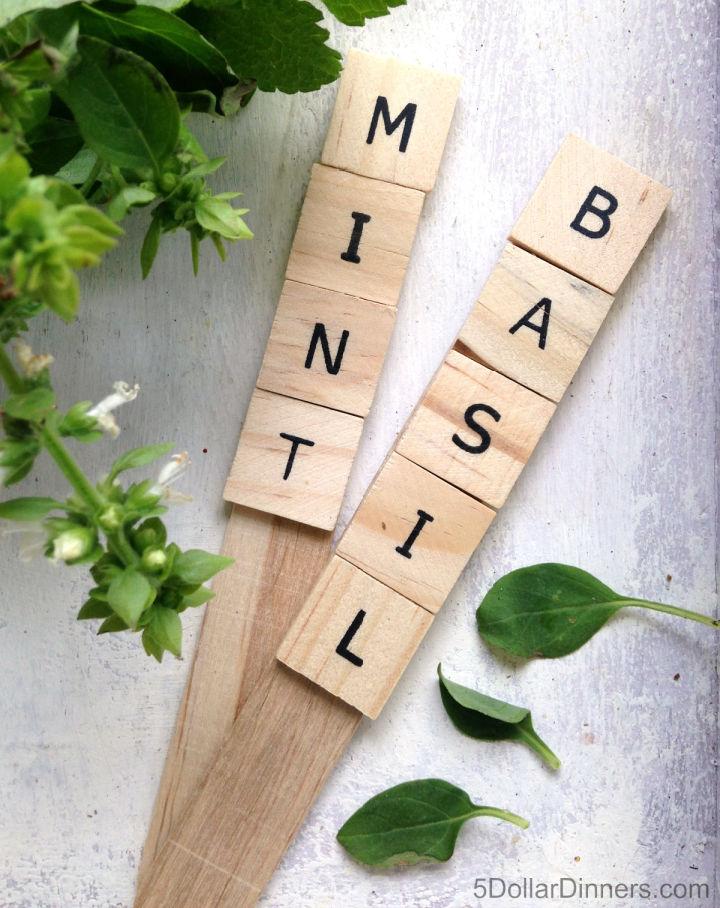
Add a quirky, playful touch to your herb garden with Scrabble tile markers. Glue tiles to a stick or stake spelling out the names of your herbs. It's a clever, engaging way to repurpose old game pieces and make your garden uniquely yours.
9. DIY Wood Burned Plant Marker

For a durable and professional-looking plant marker, try wood burning. Use a simple tool to etch plant names onto wooden stakes or plaques. This simple method makes elegant, permanent labels that withstand the elements better than most.
10. How to Make Classic Copper Plant Marker
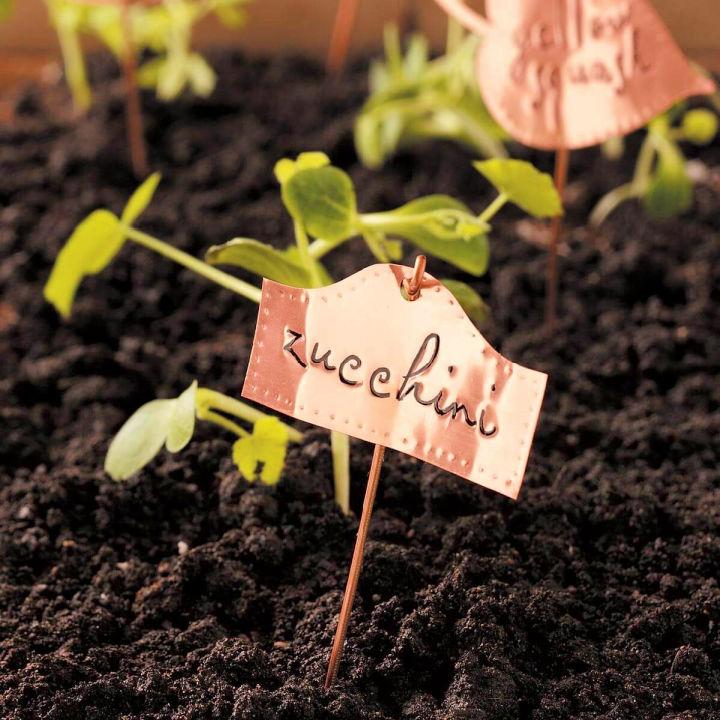
Making copper plant markers brings a timeless elegance to any garden. Cut strips from sheet copper, and etch plant names for a sophisticated look. Not only are these markers durable and weatherproof, but they also develop a beautiful patina over time, adding to their charm.
11. Plant Markers Using Clay Pots
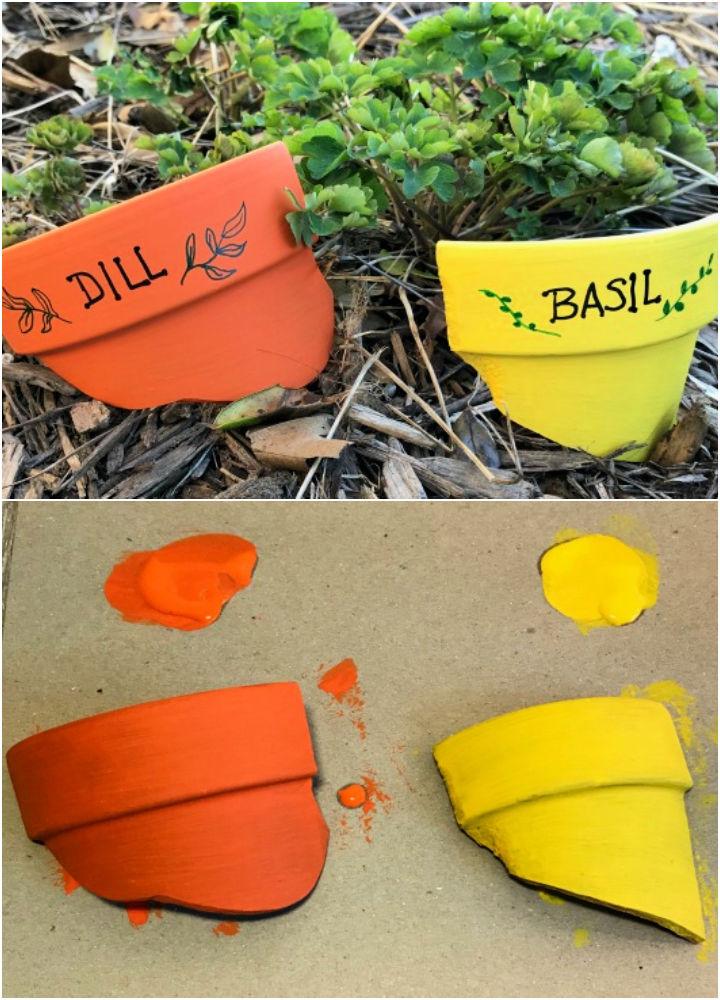
Transform clay pots into charming plant markers by simply writing the plant names on the rim. This creative twist adds a rustic touch to your garden, making it easy to identify your green friends at a glance. It's a stylish and practical solution for any plant enthusiast.
12. DIY Herb Garden Plant Markers
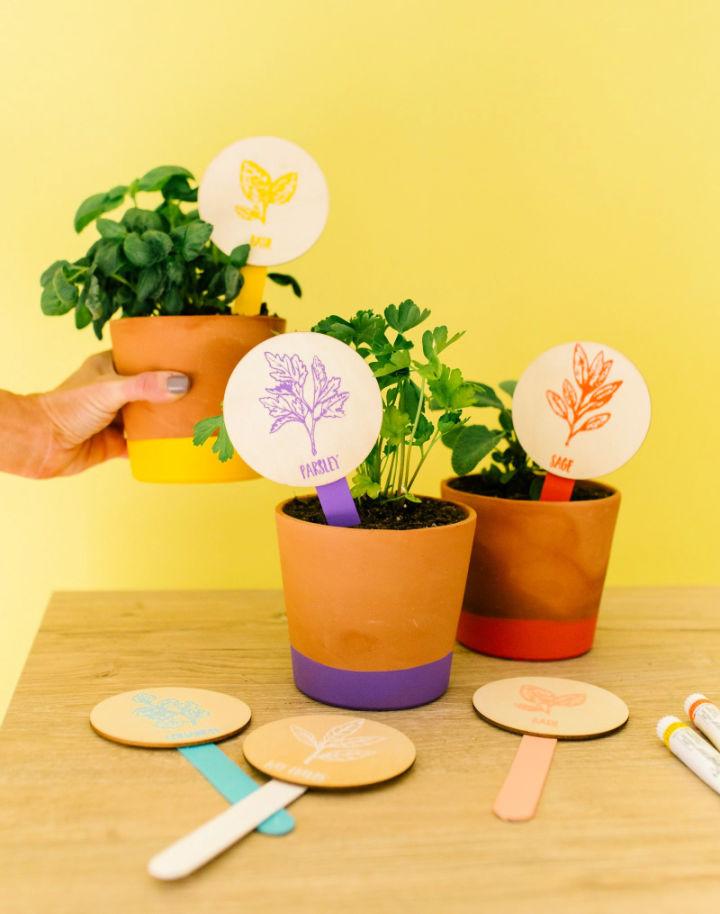
Make your herb garden markers by using small stakes and labeling them with the names of herbs. This simple DIY project not only organizes your herb garden but also adds a personal flair. It's a fun way to keep track of your culinary herbs and makes for a delightful gardening activity
13. Funny Dollar Store Plant Markers
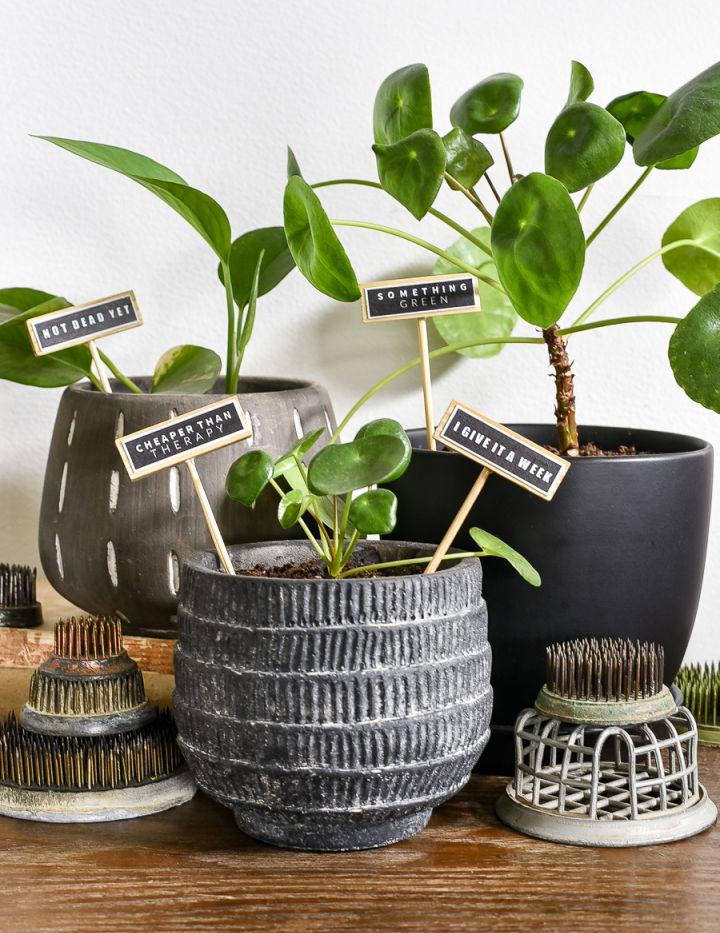
Head to the dollar store, grab some quirky items and transform them into humorous plant markers. This approach adds a dose of laughter to your garden, making a unique and cheerful atmosphere. It's an inexpensive yet effective way to bring personality to your plant collection.
14. DIY Plant Labels with Cricut Vinyl
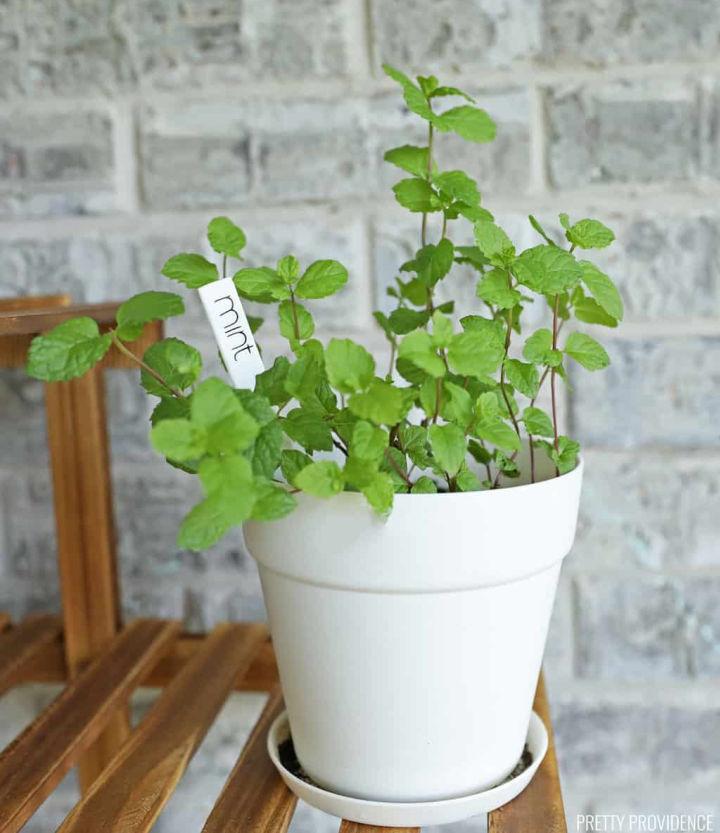
Using a Cricut machine, design and cut out vinyl labels for your plants. This modern technique allows for precision and creativity, offering endless possibilities for customization. The result is sleek, durable plant labels that withstand the elements and elevate the look of your garden.
15. Beautiful Plant Markers Using Paint Stirring Sticks
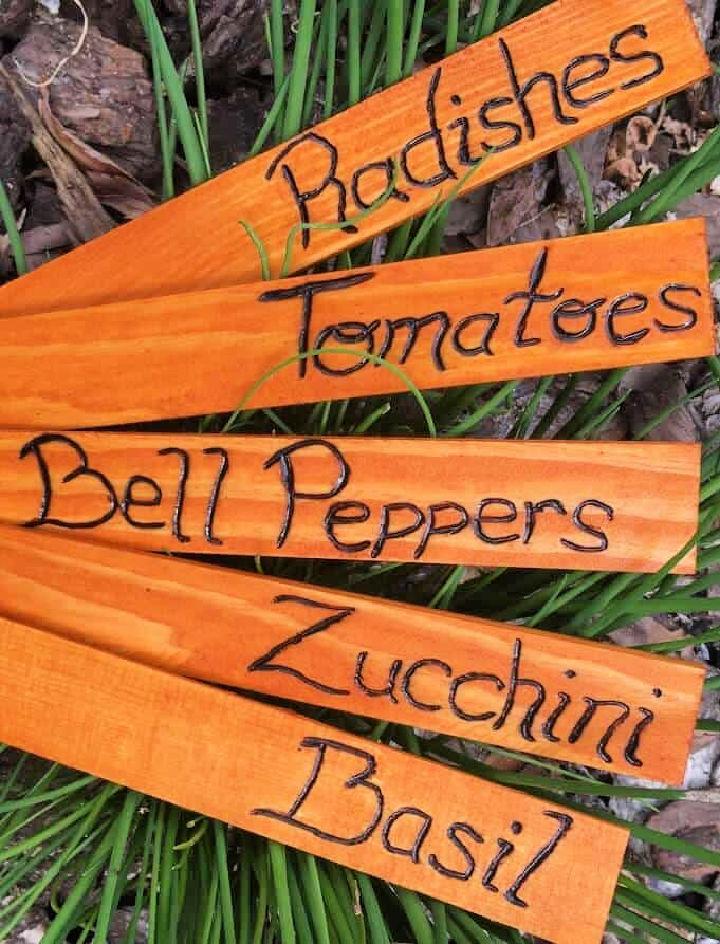
With paint-stirring sticks and a bit of creativity, you can make attractive garden markers. Paint or decorate them according to your preference and write plant names in stylish fonts. This easy DIY approach combines functionality with aesthetic appeal, making your garden both organized and visually appealing.
16. DIY Cement Plant Label Stakes
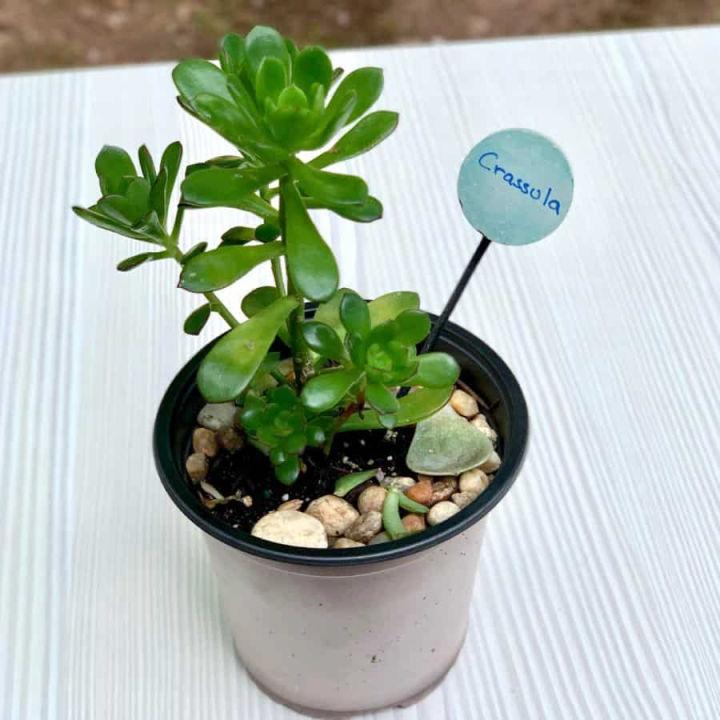
Making plant labels from cement offers a sturdy, minimalist look. Mix, mold, and inscribe your plants' names for a permanent garden addition that weathers over time. This hands-on project results in elegant, industrial-chic markers that add a sophisticated touch to any garden setting.
17. Creative Plant Name Tags

Unleash your creativity by designing unique plant name tags. Whether you choose to draw, paint, or collage, this is an opportunity to express yourself while labeling your plants. It's a fantastic way to merge art with gardening, resulting in a personalized and inspiring garden space.
18. Easy and Cheap DIY Plant Markers
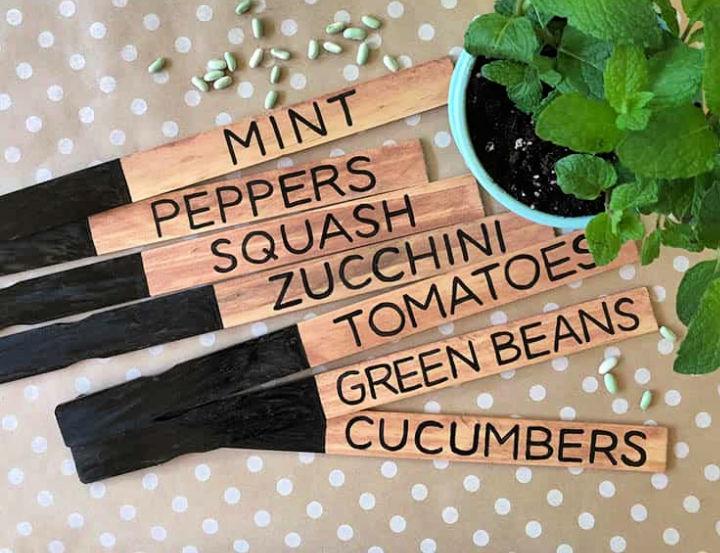
Make cost-effective plant markers using items like popsicle sticks, old spoons, or recycled materials. Write plant names with a waterproof marker or paint for a simple yet practical solution. This approach proves that organizing your garden doesn't have to break the bank.
19. Make Your Own Ombre Plant Markers For Houseplants
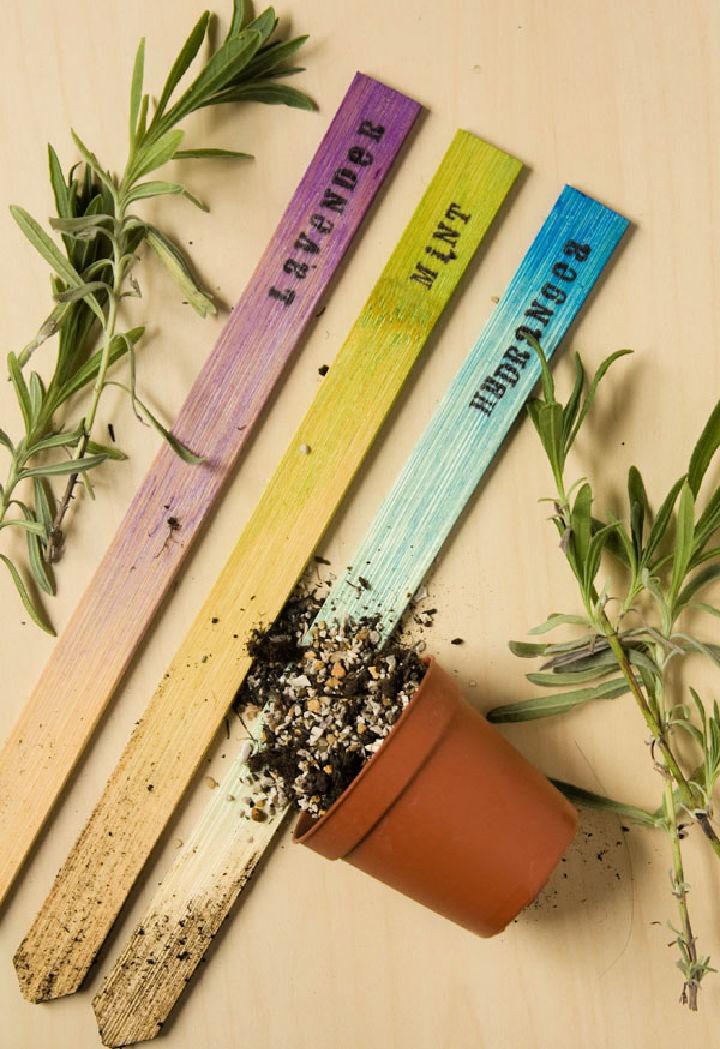
Dip paint stirring sticks into your choice of paint to achieve an ombre effect, then label them for a trendy addition to your indoor plants. This artistic touch brings a pop of color and serves as a stylish way to keep track of your houseplants.
20. DIY Outdoor Plant Marker from Can Lid
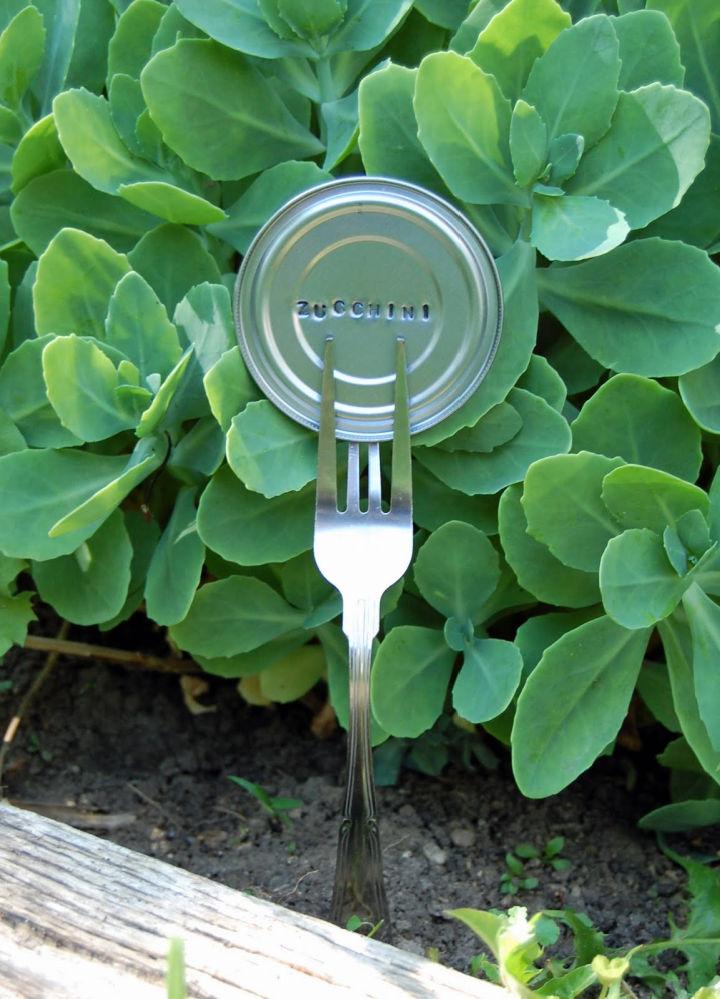
Repurpose metal can lids by punching holes, attaching them to stakes, and writing plant names on them. This easy DIY project is not only an eco-friendly way to reuse materials but also offers durable and weather-resistant markers for outdoor plants, blending seamlessly into the garden environment.
21. Garden Plant Sign with Cricut Maker
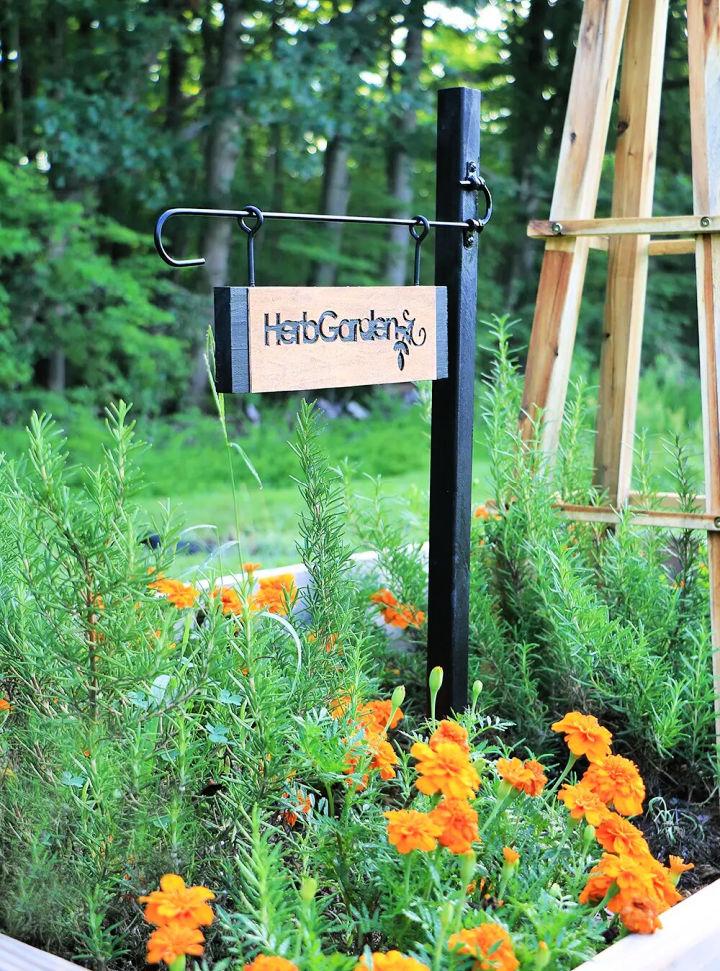
Isn't it delightful to have a garden that speaks your style? The Cricut Maker opens the door to making personalized plant signs. Effortlessly design, customize, and cut out your chosen motifs or text for that unique touch. It's all about blending practicality with creativity.
22. Plant Identification Markers from Mini Blinds
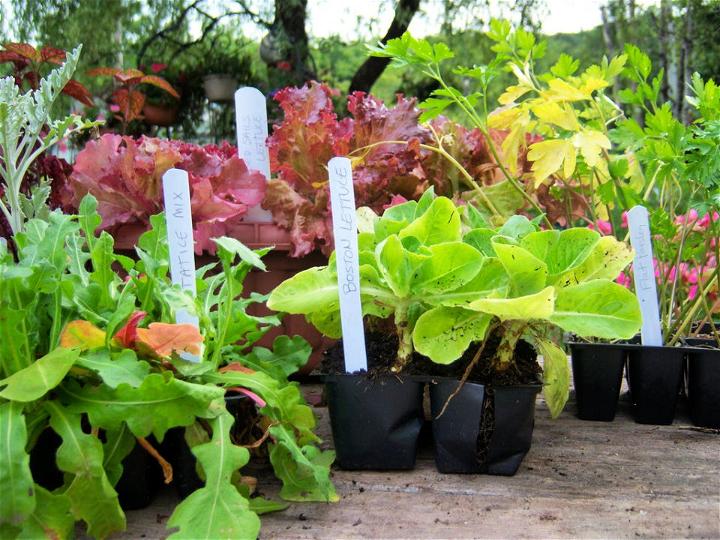
Upcycling old mini blinds into plant identification markers is both eco-friendly and innovative choice. These markers are simple to make, write on, and stick into your garden soil. They provide a clean, minimalist look while helping you remember what you planted where. A smart solution for garden organization!
23. DIY Weatherproof Birdy Flower Markers
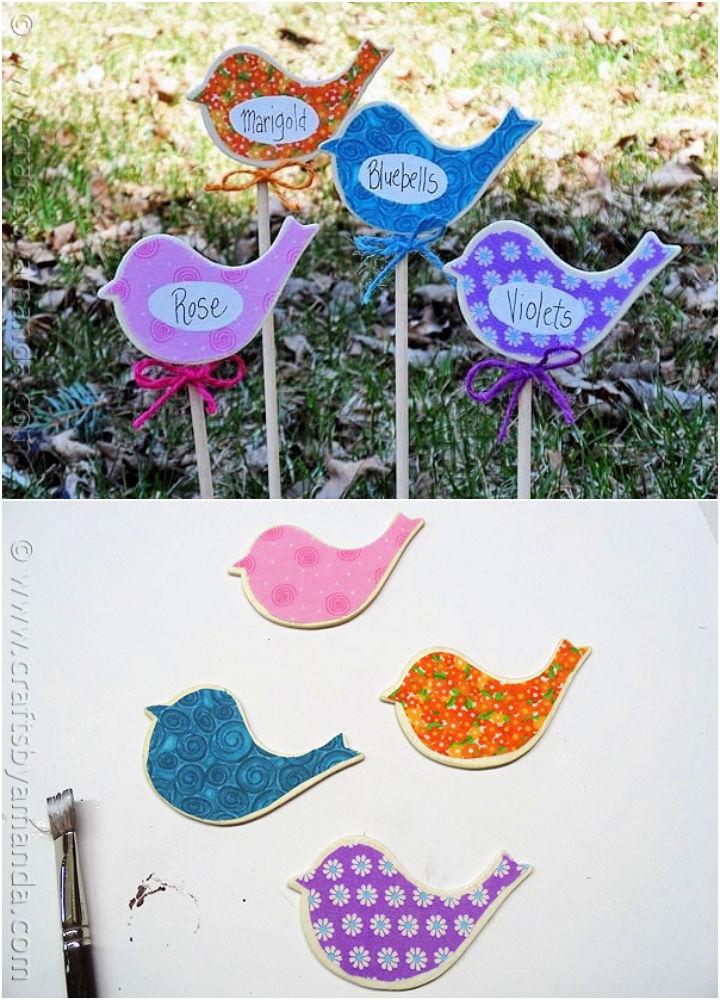
Bring a whimsical touch to your garden with DIY weatherproof birdy flower markers. Crafted from durable materials, these charming markers withstand the elements, ensuring your plant names stay visible year-round. They're as functional as they are adorable, elevating the aesthetics of your green space.
24. Painted Rock Plant Markers

Embrace your inner artist with painted rock plant markers. Collect smooth stones and unleash your creativity with paints or markers. Not only do they serve as quaint, natural markers for your plants, but they also add a vibrant splash of color and personality to your garden.
25. DIY Upcycled Metal Garden Markers
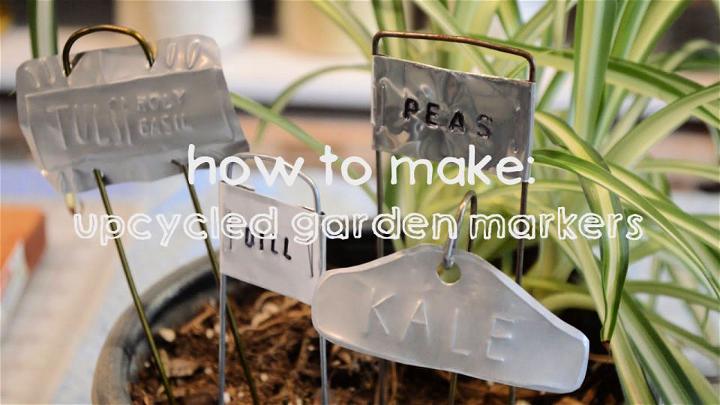
Venture into sustainable gardening by transforming scrap metal into chic, upcycled garden markers. These durable markers offer a rustic, industrial vibe to your garden layout. With just a bit of creativity, you can etch or paint plant names on them, making your garden organization both stylish and eco-conscious.
Conclusion:
In conclusion, making DIY plant labels and markers is a fun and creative way to add a personal touch to your garden. These projects are easy to make and can help you stay organized while adding some flair to your plant collection. From colorful popsicle stick labels to elegant stone markers, the possibilities are endless. Try making your own plant labels today and watch your garden come to life!



